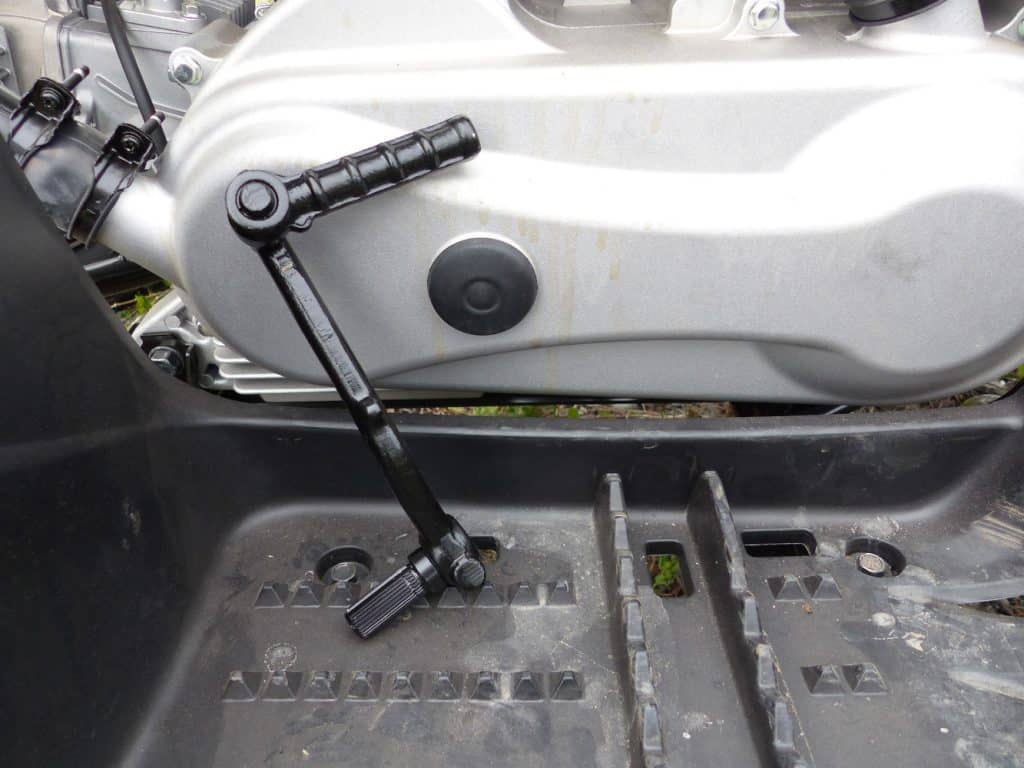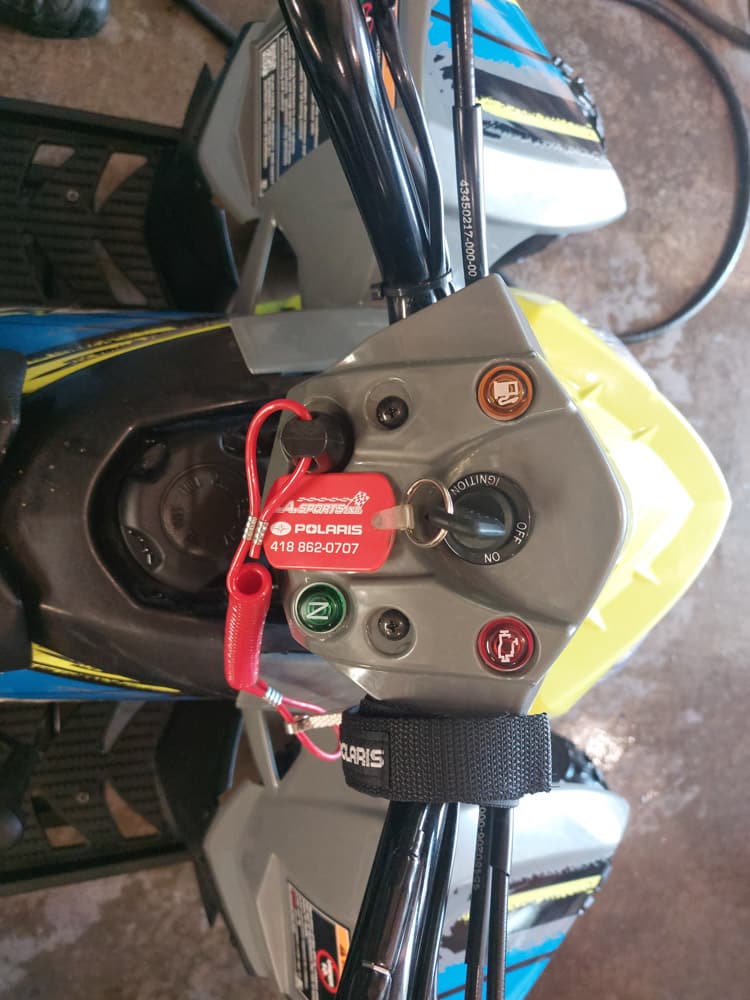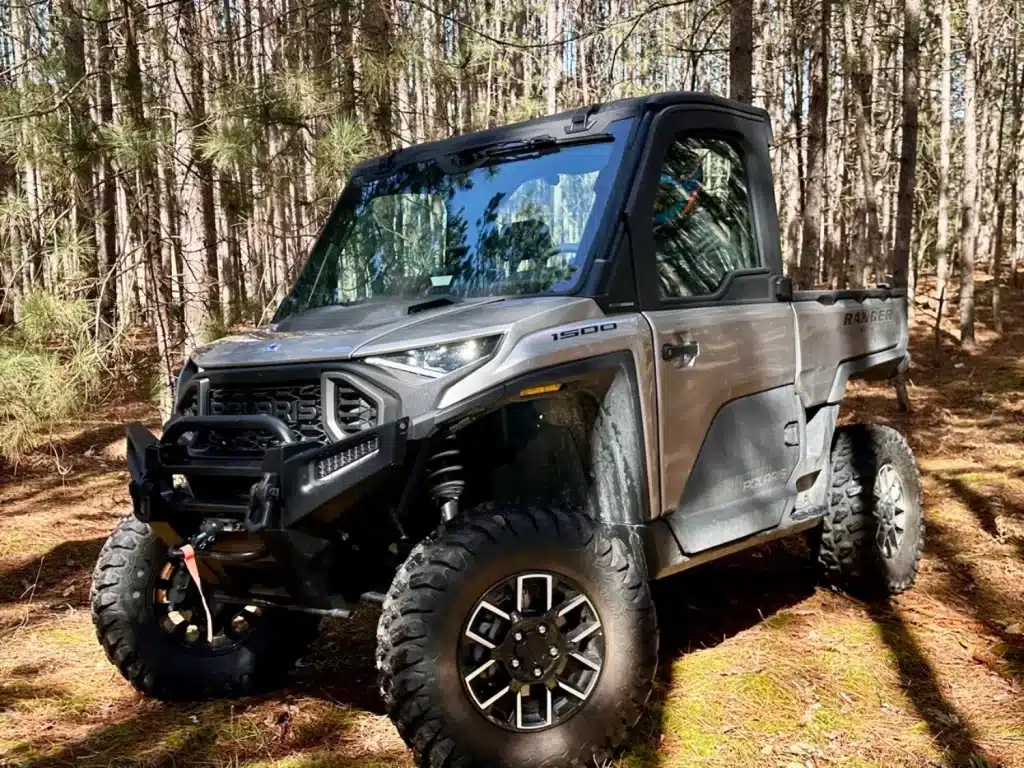In the vast majority of cases, the idea of putting an ATV in the hands of one’s children comes from their parents. The reason is usually as simple as the desire to pass on a passion for the hobby. However, when it comes to realizing the project, there’s a whole crossroads of possibilities open to you. Choosing the type of motorization, the power of that motorization, the size of the frame and the options that can be fitted. And of course, let’s not forget the “look”.
There are plenty of ATVs to choose from that are suitable for children. However, it’s important to make the right choice. An ATV with too much power can frighten children and compromise their enjoyment of the activity. Likewise, a frame that’s too big can make it difficult to hold. These anxiety-provoking factors must be avoided in order to guarantee safety and to arouse the child’s enjoyment and interest in the experience.
We’re going to help you see things more clearly, through the analysis, testing and comments of our test pilots.
Electric motorization
This is the age of the electric motor. The electric ATV is a low-cost, virtually maintenance-free alternative with a relatively low selling price. It’s ideal for getting around the house with a minimum of noise. Unfortunately, like all electric vehicles, it must be recharged. Recharging time varies from 3 to 10 hours, depending on the battery used. Most are equipped with lead-acid batteries, which explains their low price. Those with lithium batteries are priced very close to internal combustion engine models. The replacement parts network of some ATV manufacturers is sometimes complicated, and in some cases non-existent.

Internal combustion engines
Gasoline engines have always played an important role in ATV motorization. Some would say that an ATV should rumble! Well, that’s a matter of taste! But there are many other reasons to opt for this type of engine, such as..:
Range
The gasoline engine offers a long range of several hours.
Refuelling
Refuelling a gasoline tank is much faster than recharging a battery. It’s also easier to transport gasoline to the cottage than electricity.
Availability
The gas-powered ATV is part of our tradition and readily available. It’s built to be as robust as a large ATV. The availability of replacement parts is ensured by a stable and reliable network.

Our test vehicles:
To highlight the differences between certain ATVs, we organized an analysis and test session of children’s ATVs. For the occasion, we brought together ATVs with internal combustion engines. This event was made possible thanks to the collaboration of Can-Am Off-Road for the availability of the Renegade EFI 70, Polaris dealer CA Sport for the Outlaw 110, and Yamaha dealer Pelletier Moto Sport for the Raptor 90. In addition, we’ve added an older ATV that continues to attract interest, the 2006 Honda TRX 90. Production of the latter ended in 2019.
Safety first
Although these ATVs are not extremely powerful, they offer enough power and speed to cause serious injury to the rider and bystanders, so you need to have the right protective equipment. Let’s have a look!
The helmet
As soon as you mention “safety equipment”, helmets come to mind. Indeed, it’s one of the most important items that can help protect your head from serious injury, including head trauma.
Forget the old “uncle” motorcycle helmet. Forget the skateboard helmet, or even worse, the bicycle helmet. The helmet must not be too big. If the child shakes his head and the helmet flops around without really following his head movements, it’s too big. We know he’s going to grow, but the helmet needs to fit properly on his head to be effective.
As for the style of helmet, motocross with goggles or visor, that’s a personal choice.
Little tip!
You’re trying to find out if your child is old enough and ready to ride an ATV! To find out, try this little “test”. Put a helmet on the child’s head and have him run through an obstacle course with sudden changes of direction. If he hits a door frame with the helmet, if it bumps into his shoulders during the course, or if he holds it with his hands, then it’s probably best to wait until next season. These signs indicate that his neck is not yet strong enough to support the weight of a helmet. It’s important to imagine the effect of the helmet’s weight on that little neck in the event of a violent impact.
There are also cervical collars designed to protect and support the child’s neck. Our test rider Adriana wore one during our test.
Clothing
Clothing is the only protection for your body. Long sleeves and gloves protect against possible lacerations in the event of a fall or contact with tree branches. Properly laced shoes will also prevent foot and ankle injuries when your child sets foot on the ground.
Properly laced shoes will also prevent injury to feet and ankles in the event of a minor steering error requiring the foot to be pulled out to avoid a tip-over. The comfort provided by good protective equipment also means that the driver can concentrate on driving without being hindered by external factors.

Instructions and learning
Without learning, the child risks getting on the ATV, grabbing the throttle and off he goes! The more it rolls, the more he’ll hold on to it, and the more it’ll roll. You can imagine the rest of the story. A demonstration with the child and simple, precise instructions are needed to maintain control.
Playground
Since 2020, drivers must be at least 16 years old to be authorized to ride on a federated trail, on public land or on land belonging to a municipality. In addition, the driver must be in possession of an aptitude certificate issued by the FQCQ or a valid driver’s license.
These restrictions considerably reduce the number of playground options. It is therefore preferable to create a closed circuit on private land. It’s essential to control access to other vehicles, and to have a clear overview. With a well-established circuit, it’s easier to control risks.
Mechanical analysis:
Mechanically, there aren’t many surprises here, or rather we should be quite surprised. Regardless of whether you choose the Can-Am, Polaris or Yamaha, the engine, drive train, chassis and suspension are all the same, give or take a few details. It’s the rest of the ATV that will determine your decision. So, in general, these ATVs are equipped as follows:
- Single-cylinder 4-stroke engine
- Electronic fuel injection, except for the Raptor, which has a carburetor
- Automatic CVT transmission with reverse
- Acceleration limiter
- Drum brake
- Chain drive
- Single A-arm front suspension
- Single A-arm rear suspension
- headlights and rear position light (Except Raptor)
- Electric starter
- Emergency manual starter (Raptor only)

Can-Am Renegade 70 EFI
The smallest displacement in the test group, it’s equipped with ingenious dual, adjustable footrests that keep the smallest rider’s feet firmly planted. Once the liner is removed, it’s ready for the taller rider. This ingenious idea will enable the youngest to use this ATV for several years, even until the displacement is perfectly mastered. Target age 6 and up. By age 10, the rider will be ready to conquer the Renegade 110 EFI.

Polaris Outlaw 110
The Outlaw 110 targets a more experienced clientele. The chassis is larger. The power of this ATV makes it easy for an adult to get around. It’s aimed at ages 10 and up. At age 14, the Phoenix 200 will follow.

Yamaha Raptor 90
The Raptor 90 is an excellent intermediate choice. Its chassis is virtually the same size as that of the 110 cm3, but it is slightly less powerful and faster. Yamaha had equipped the 2023 test model with carburetor fuel supply. In 2024, the Raptor was upgraded to a 110 cm3 displacement with fuel injection. The 90 cm3 model became the Grizzly 90 and retained its carburetor. It is the least expensive of the test group. The absence of fuel injection and headlights certainly helps to reduce manufacturing costs. Yamaha is the only company to have equipped its ATV with an emergency engine start lever in case of electric starter failure.

Honda TRX 90
The TRX 90 was included in the test to see how test riders reacted to a four-speed manual transmission, which was the norm in 2006. Unlike other manufacturers, Honda had its own engine. A 90 cm3 four-stroke displacement. The fathers present at the test ride were nostalgic for this rougher, manual-gear ATV. The astonishing performance of ATVs with automatic transmissions quickly changed these nostalgic opinions. Automatic transmissions are very powerful, and reserve the driver’s concentration for steering.
Driver preferences

Adriana
Your favorite ATV? Polaris Outlaw 110
Why do you prefer it? It goes fast and my thumb on the throttle doesn’t hurt as much.
Which do you think is the most beautiful? The Polaris!
What’s your second choice? The Honda.
Why is that? Because of the gears.

Delphine
Your favorite ATV? The Polaris Outlaw 110
Why is that? It goes fast and skids more in corners.
Which do you think is the most beautiful? The Can-Am because of its colors.
What’s your second choice? The Can-Am Renegate
Why do you think so? It’s smoother and doesn’t “fly” over bumps.

Félix
Your favorite ATV? The Polaris Outlaw 110
Why is that? It goes fast and steps in the bumps.
Which do you think is the most beautiful? The Polaris
What’s your second choice? The Yamaha Raptor 90
Why do you like it? It goes fast.
*Felix said that the Honda TRX 90 was more forgiving.

Charles-Édouard
Your favorite ATV? The Polaris Outlaw 110
Why do you prefer it? Faster and easier to drive.
Your second choice? Yamaha Raptor 90
Why would you choose it? It goes fast too, and I like riding it.

Lucas Blanchette
Your favorite? The Honda
Why do you prefer it? It’s not as small and I like the gears. It’s practical, I can choose how I want to go.
What’s your second choice? Yamaha Raptor
Why do you choose it? It’s great!

Arnaud
What’s your favorite? The Polaris Outlaw 110
Why do you like it? It’s fast.
Which is the most beautiful? The Polaris, it has fluorescent colors.
The verdict
It’s obvious that our test riders appreciate speed, which gave the Polaris Outlaw 110 an edge, being the largest displacement. The Yamaha Raptor 90 also stood out for its speed, but above all for its ride quality. The Can-Am Renegade 70 EFI was noticed by the less adventurous and those looking for more stability. As for the Honda TRX 90, it was the more experienced riders who turned to it slightly.
In all cases, the throttle trigger causes discomfort due to an overly powerful return spring. The brake controls are also difficult to use due to their lack of efficiency, which is amplified by the small size of children’s hands. Only the Honda TRX 90 is equipped with foot brakes, offering more power. As for the tires on these ATVs, although they differ from one vehicle to another, the choice is adapted to their respective destinies.


Choosing an ATV for your children – Carburettor fuel supply, Raptor 90



Raptor, Outlaw and Renegade instrument cluster
When comparing our ATV models, in terms of motorization and general design, they are essentially the same. They have all borrowed the chassis and engine from the same manufacturer. What sets some ATVs apart are the additions that personalize them. Some have headlights, others a fuel injection system, a horn or an emergency manual starter.
At the end of the day, the choice of displacement is crucial to meeting your needs. The rest depends on the buyer’s whim!


Choosing an ATV for your children – Rear suspension and drum brake






